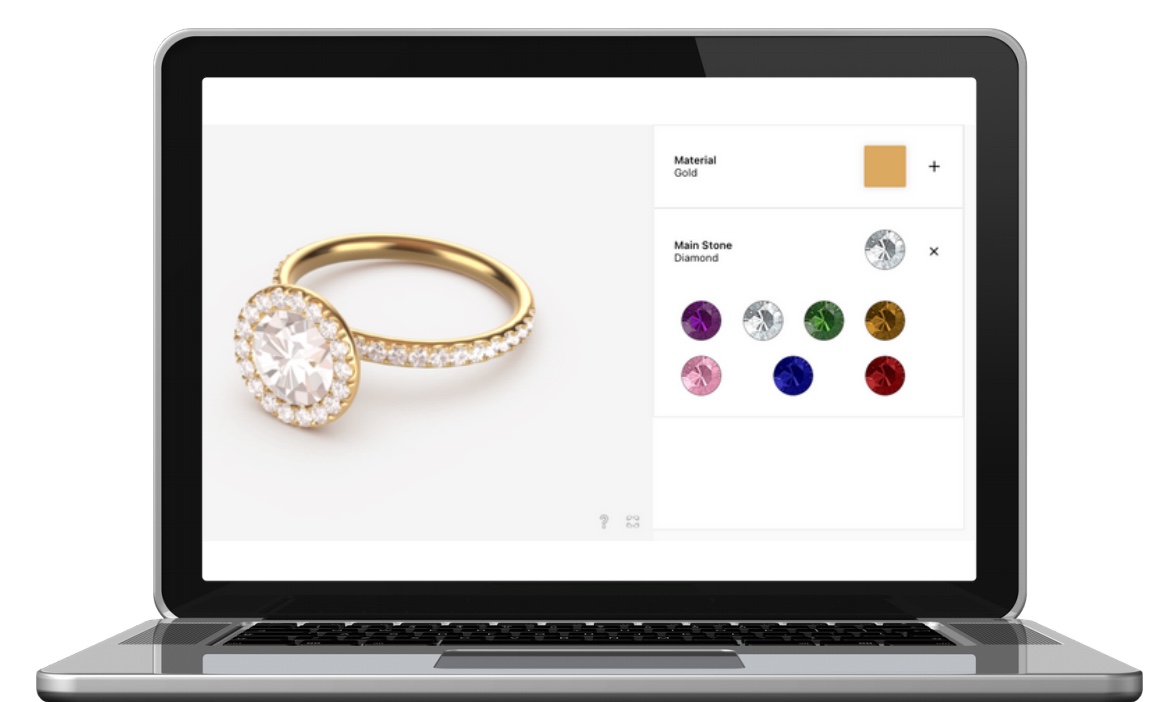5 Ways Our 3D Customizer Is Built to Optimize Page Speeds

3D customizers are growing more popular as news spreads that almost half of shoppers want product customization options. Owners of Shopify stores and other eCommerce stores are realizing they could implement a pricing increase, as many consumers feel that customizable products are worth more.
eCommerce will continue shifting more towards customized products. As it does, more complex visuals like 3D models, 360-degree videos and augmented reality (AR) capabilities will also grow more prevalent.
While that's great for helping consumers visualize products, it's not always great for page speeds. We'll be discussing what page speeds are, why they matter and five ways our 3D customizer is built for fast page speeds.
What Is Page Speed, and What Factors Affect It?
Page speed refers to the time it takes a page on your site to create and display HTML, load completely and respond to interactions from users. Overall page speed depends on a number of things, including:
- Page weight: The size of all the elements on the page. Pages with a higher weight will be slower.
- Network conditions: The strength and quality of the internet connection.
- Hosting location: Your hosting location, or where your website's data is stored, affects page speed because the data has to travel to the user's destination. The greater the distance, the longer that takes.
- Image variables: Image size, amount of compression used, image file type, image quality and the number of images affect how long it takes to load.
Why Does Page Speed Matter to eCommerce Sites?
Individual page speeds will factor into your overall site speed. Google samples your pages to check the three latency metrics (page load time, execution speed and browser parsing speed) to create your PageSpeed Score.
This score factors into your ranking as a Page Experience factor, which measures the overall customer experience your page provides.
In other words, good site speed is a requirement for ranking on Google. Having a lot of images, especially high-quality ones, can quickly tank your page speeds if you're not careful.
eCommerce consumers expect an average of five to eight quality images per product page.
Google isn't the only reason page speeds matter, though. Users are just as averse to slow page speeds, if not more so.
Consider these facts about user attention and page speeds:
- Site visitors' attention span has been on the decline for decades, now being shorter than that of a goldfish.
- Retailer mobile sites take an average of almost 7 seconds to load.
- Over half (53%) of users on mobile will only wait 3 seconds for a page to load before they skip to content that loads faster.
- Nearly half (44%) of users will leave a site altogether if the product images don't load.
Clearly, eCommerce store owners need a good amount of high-quality visuals to meet consumer expectations. However, if they aren't careful, they risk hurting their Google search ranking. What good are great product visuals sure to wow consumers if nobody ever finds them because your site isn't on the first page of Google?
5 Ways Our 3D Customizer Improves Page Speed

eCommerce consumers can't see your products in person, so great visuals are the key to purchase confidence. Buyers frequently say having enough quality visuals is their biggest deciding factor.
However, images frequently comprise nearly 75% of page weight. Since bloated, poorly optimized images decrease sales, striking a balance is crucial.
Our 3D customizer does that by providing a variety of stunning visuals to help you offer custom products and display high-quality images of every customization option without hurting page speeds! Here are the top five ways our product customizer does this.
1. WebP image formatting
WebP is a newer image format designed to retain quality while making images smaller than other methods to keep them from slowing websites down. It can be used for lossless or lossy image compression.
WebP typically produces 25% to 34% smaller images than JPEG and PNG, at times being as much as three times smaller. Images become smaller and better looking, the best of both worlds.
2. Using speedy video assets
Customers grow increasingly interested in interactive video content. Not only can videos require a large time and money investment they can also require tons of bandwidth.
Our 3D customizer uses 3D rendering to generate perfect interactive product videos. This adds functionality by allowing users to display the product from any angle.
3. Pre-rendered visuals
Our 3D customizer's unique Virtual Photographer™ generates photorealistic, pre-rendered images with lightning-fast loading speeds! No matter how many product images you need, our Virtual Photographer™ can handle it without tanking your page speeds.
Our product configurator/product customizer app uses 3D rendering software to turn whatever product files you have into 3D models. These 3D designs are then used to generate 2D product photos.
Page speeds can be slowed by what you might call a loading traffic jam. Dozens of images all try to load simultaneously right as the page opens, slowing everything down.
Our platform solves this in two ways: by using pre-rendered images or by generating them in real-time. This prevents traffic jams.
4. Responsive, Mobile-Friendly Design
Mobile device users are notorious for their impatience. They have the highest bounce rates and most abandoned carts of any eCommerce demographic.
These shoppers won't hesitate to go somewhere else if your product page doesn't load quickly. They also have the smallest screens and the most distractions to pull them away.
That's why we always make sure everything we do is mobile-first oriented. That means, among other things, that all our images are responsive and designed to load quickly.
5. 360° Product Viewer
A 360-degree product viewer is an app that displays 360° visuals.
Using advanced software, it can stitch dozens of images—from every angle—together in the right order to generate a continuous 360° product view. It helps to think of it as a flipbook or cartoon animation, though some find it easier to think of 3D printing.
A 3D printer uses thin layers that, when stacked correctly, create a three-dimensional object. With the 3D configurator's product viewer, instead of trying to 3D print an object from horizontal slices, it creates a 3D model using images of every angle you'd see while walking around it.
This allows the 3D model or 360° video to spin, giving the same effect as circling it in person.
Click here to learn more about Threekit's 3D customizer.
Embrace the Need for Speed
Page speed is a huge factor in eCommerce success. It determines your Google rank, your traffic, your sales and so much more.
Don't you think it's time you made page speed your priority? Give users what they want: the ability to start customizing your products without the headache of endless loading.
Get in touch today to learn more about how Threekit's 3D product customization platform can help your business.




